retrograde motion
description: the apparent backward motion of a planet as observed from Earth
18 results
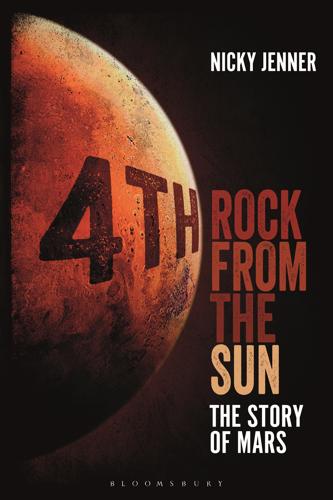
4th Rock From the Sun: The Story of Mars
by
Nicky Jenner
Published 5 Apr 2017
However, as Mars’s orbit is slightly tilted with respect to our planet, we see a different scene play out depending on how the two planets are orientated at that point in their orbits: sometimes it’s a loop, sometimes a zigzag, sometimes a curling ‘S’ shape. The 2003 retrograde motion, for example, zipped by as a loop-the-loop, whereas the 2005 event resembled a more jagged ‘Z’. The concept of retrograde motion is a good example of how the practices of astronomy and astrology are strongly intertwined and have been for centuries. Retrograde motion is a solidly scientific astronomical term. However, the concept is also used in an astrological sense. Astrologers frequently refer to various planets (often Mercury) as being ‘in retrograde’; rather than referring to the aforementioned cosmic trick of perspective, this phrase has a distinct astrological meaning – that of reversing your characteristics, challenging your stereotypes and becoming more introspective, reassessing your life goals and desires, of things becoming muddled or unclear, or seeming to regress or slow down.
…
The moment at which it overtakes is when the apparent retrograde motion takes place. As Earth catches up with Mars, the planet seems to briefly halt. As Earth moves past Mars, briefly overtaking it on its elliptical path around the Sun, Mars seems to fly backwards in the sky – in reality, it is doing no such thing. As Earth carries on around its loop, Mars ‘catches up’ to our perspective and appears to halt briefly before carrying on ‘eastward’ as before. This retrograde loop usually takes Mars a couple of months to complete. Diagram explaining the phenomenon of retrograde motion – the real motion of the Earth (inner ring) and Mars (outer ring) is shown on the left, with Mars’s resulting apparent motion seen in our sky on the right.
…
, something that may be responsible for the idea of Mars being impulsive, rebellious and non-conformist. This backwards motion, known as ‘retrograde’, has been observed for about as long as humanity has been gazing at the skies and was dutifully noted in various ancient astronomical records. Retrograde motion is simple in theory, but can be difficult to visualise. It all boils down to the motions of Earth and Mars relative to one another. We see the sky – Sun, stars, planets and all – to rise in the east and set in the west. This isn’t a motion inherently applicable to the heavens, but a product of Earth’s direction of rotation (anti-clockwise, if we were to look down on it from the North Pole – only Venus and Uranus rotate the other way, a phenomenon known as ‘retrograde rotation’).

Big Bang
by
Simon Singh
Published 1 Jan 2004
Ptolemy’s world-view started with the widely held assumption that the Earth is at the centre of the universe and stationary, otherwise ‘all the animals and all the separate weights would be left behind floating on the air’. Next, he explained the orbits of the Sun and Moon in terms of simple circles. Then, in order to explain retrograde motions, he developed a theory of circles within circles, as illustrated in Figure 9. To generate a path with periodic retrograde motion, such as the one followed by Mars, Ptolemy proposed starting with a single circle (known as the deferent), with a rod attached to the circle so that it pivoted. The planet then occupied a position at the end of this pivoted rod.
…
Sure enough, the Sun, Moon and stars all seemed to march obediently around the Earth, but there were five heavenly bodies that dawdled across the heavens in a rather haphazard manner. Occasionally, some of them even dared to stop momentarily before temporarily reversing their motion in a volte-face known as retrograde motion. These wandering rebels were the five other known planets: Mercury, Venus, Mars, Jupiter and Saturn. Indeed, the word ‘planet’ derives from the Greek planetes, meaning ‘wanderer’. Similarly, the Babylonian word for planet was bibbu, literally ‘wild sheep’ — because the planets seemed to stray all over the place.
…
From our modern Earth-orbits-Sun perspective, it is easy enough to understand the behaviour of these heavenly vagabonds. In reality, the planets orbit the Sun in a steady manner, but we view them from a moving platform, the Earth, which is why their motion appears to be irregular. In particular, the retrograde motions exhibited by Mars, Saturn and Jupiter are easy to explain. Figure 8(a) shows a stripped-down Solar System containing just the Sun, Earth and Mars. Earth orbits the Sun more quickly than Mars, and as we catch up to Mars and pass it, our line of sight to Mars shifts back and forth. However, from the old Earth-centred perspective, in which we sit at the centre of the universe and everything revolves around us, the orbit of Mars was a riddle.
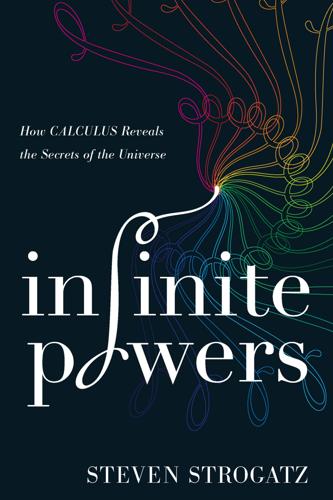
Infinite Powers: How Calculus Reveals the Secrets of the Universe
by
Steven Strogatz
Published 31 Mar 2019
Most of the time they moved eastward relative to the stars, but occasionally they appeared to slow down, stop, and go backward, westward, in what astronomers called retrograde motion. Mars, for example, was seen to move in retrograde for about eleven weeks over the course of its nearly two-year circuit around the sky. Nowadays we can capture this reversal photographically. In 2005 the astrophotographer Tunç Tezel took a series of thirty-five snapshots of Mars, each about a week apart, and aligned the images to the stars in the background. In the resulting composite, the eleven dots in the middle show Mars moving in retrograde. Today we understand that retrograde motion is an illusion. It’s caused by our vantage point on Earth as we pass the slower-moving Mars.
…
But when you pull alongside and pass it, the slower car momentarily seems to move backward relative to the mountains. Then, once you get far enough ahead of it, the car appears to move forward again. This kind of observation led the ancient Greek astronomer Aristarchus to propose a sun-centered universe almost two millennia before Copernicus did. It neatly solved the riddle of retrograde motion. However, a sun-centered universe raised questions of its own. If the Earth moves, why don’t we fall off? And why do the stars appear fixed? They shouldn’t. As the Earth moves around the sun, the distant stars should appear to shift their positions slightly. Experience shows that if you look at something far away and then move and look again, the position of that faraway object appears to shift when viewed against a more distant backdrop.
…
Aiton, A. M. Duncan, and J. V. Field, Memoirs of the American Philosophical Society 209 (1997): 304. 60 “supplied God with patterns”: Ibid. 60 Plato had taught: Plato, Republic (Hertfordshire: Wordsworth, 1997), 240. 60 Aristotelian teaching: Asimov, Asimov’s Biographical Encyclopedia, 17–20. 61 retrograde motion: Katz, History of Mathematics, 406. 62 Aristarchus: Asimov, Asimov’s Biographical Encyclopedia, 24–25, and James Evans, “Aristarchus of Samos,” Encyclopedia Britannica, https://www.britannica.com/biography/Aristarchus-of-Samos. 63 Archimedes himself realized: Evans, “Aristarchus of Samos.” 63 Ptolemaic system: Katz, History of Mathematics, 145–57. 64 Giordano Bruno: Martínez, Burned Alive. 64 Galileo Galilei: The Galileo Project, http://galileo.rice.edu/galileo.html, is an excellent online resource for Galileo’s life and work.
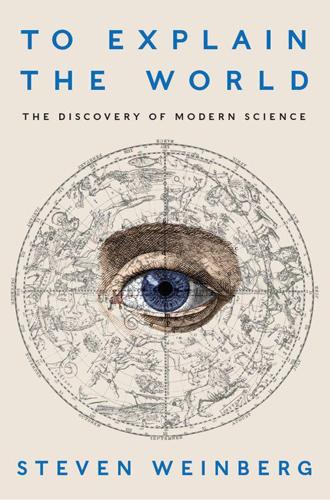
To Explain the World: The Discovery of Modern Science
by
Steven Weinberg
Published 17 Feb 2015
The apparent daily motion of the stars around the Earth arises entirely from the Earth’s rotation on its axis. 6. The apparent motion of the Sun arises jointly from the rotation of the Earth on its axis and the Earth’s revolution (like that of the other planets) around the Sun. 7. The apparent retrograde motion of the planets arises from the Earth’s motion, occurring when the Earth passes Mars, Jupiter, or Saturn, or is passed in its orbit by Mercury or Venus. Copernicus could not claim in the Commentariolus that his scheme fitted observation better than that of Ptolemy. For one thing, it didn’t. Indeed, it couldn’t, since for the most part Copernicus based his theory on data he inferred from Ptolemy’s Almagest, rather than on his own observations.3 Instead of appealing to new observations, Copernicus pointed out a number of his theory’s aesthetic advantages.
…
See also electromagnetism magnification, 174–75, 219, 334–36 magnitude of stars, 88n Maimon, Moses ben (Maimonides), 98, 114–15 Malebranche, Nicolas de, 122, 246 Marcellus, Claudius Marcus, 39, 71 Maria Celeste, Sister, 187 mariners, 65, 175 Marriage of Mercury and Philology, The (Martianus Capella), 124 Mars, 77, 245n apparent retrograde motion of, 90, 148 brightness of, 87 Copernicus and, 148–51 distance to, 239–40 eccentricity of orbit, 167 epicycles and, 303–6 Greeks and, 81–82, 84, 87–90, 94 as ideal test case, 165n Kepler and, 162, 165, 169 Ptolemy and, 89, 90, 94, 255 sidereal period of, 171 Martianus Capella, 124–25 Martinez, A.
…
See also algebra; calculus; geometry; and specific individuals and theories Arabs and, 105–7, 111, 117, 123 Babylonian, 15 Copernicus and, 158–59 Descartes and, 203, 213–14 Einstein and, 253 field approach and, 250 Galileo and, 172, 179 Glaber, Raoul (Radulfus), 125 Greeks and, 15–21, 35, 39–40, 47, 63, 65–70, 79, 105 Kepler and, 161–62, 255 medieval Europe and, 126, 137–40 Neoplatonists and, 47 Newton and, 218, 223–25, 246, 253 Ptolemaic models and, 79–80, 88–99 Pythagoreans and, 16–18 role of, in science, xv, 19–21, 79, 101, 140, 146, 197 matter alchemists and, 11 Aristotle and, 64–65 atomic theory of, 259–60 dark matter and, 9 early Greeks and, 4–14, 44–45 Newton and, 256–57 Plato and, 10, 13 Matthews, Michael, 30, 369 Maxwell, James Clerk, 220, 258–60, 267 Maxwell’s equations, 258n Mayr, Simon, 177n mean speed theorem, 138–41, 191–92, 313–15 Mechanice syntaxism (Philo), 35 medicine, 41–43, 106, 111–12, 114–16, 118, 141 medieval Europe, xiv, 26–28, 101, 124–43 Melanchthon, Philipp, 155, 157, 158, 161 mercury, 11, 198–200 Mercury, 77, 165n, 245n, 250 apparent retrograde motion of, 148 Aristotle and, 84–85 Copernicus and, 86, 148–51, 155 eccentricity of orbit, 167, 324 elongations and orbit of, 320–21 epicycles and, 303–5 Greek models and, 81–82, 84–86, 88–91, 94, 124 Kepler and, 162–63, 171–72 Ptolemy and, 88–91, 94, 149, 155, 255 Mersenne, Marin, 16 Merton, Robert, 253, 382 Merton, Walter de, 138 Merton College, Oxford, 138–41, 191 Merton thesis, 253 Mesopotamia, 104, 107, 110 Metaphysics (Aristotle), 4, 16, 83–84 Meteorology (Aristotle), 127 Meteorology (Descartes), 208 Metonic cycle, 60–61 Meton of Athens, 60 metric system, 240–41 microwave radar, 180 Midsummer Night’s Dream, A (Shakespeare), 34 Miletus, 3–4, 7–8, 11, 33, 254 Milky Way, 128, 176 Millikan, Robert, 260 mirrors, 35–38, 289–91, 348 curved, 37–38, 79 telescope and, 79, 219 modern science, xiii–xiv, 254–55 beginning of, in 17th century, 189–200 Descartes and, 212 early Greeks and, 11–12 Galileo and, 172, 190 Huygens and, 197 impersonal nature of, 254 Newton and, 216 molecules, 249, 259, 262, 266 momentum, 133–34, 232, 234–35.

The Laws of Medicine: Field Notes From an Uncertain Science
by
Siddhartha Mukherjee
Published 12 Oct 2015
Mars just would not fit. It was the outlier, the aberration, the grain of sand in the eye of Tychonian cosmology. If you carefully follow Mars on the horizon, it tracks a peculiar path—pitching forward at first and then tacking backward in space before resuming a forward motion again. This phenomena—called the retrograde motion of Mars—did not make sense in either Ptolemy’s or Brahe’s model. Fed up with Mars’s path across the evening sky, Brahe assigned the problem to an indigent, if exceptionally ambitious, young assistant named Johannes Kepler, a young mathematician from Germany with whom he had a stormy, on-again, off-again relationship.
…
Kepler, however, did not consider Mars peripheral: if a planetary model was real, it had to explain the movements of all the planets, not just the convenient ones. He studied the motion of Mars obsessively. He managed to retain some of Brahe’s astronomical charts even after Brahe’s death, fending off rapacious heirs for nearly a decade while he pored carefully through the borrowed data. He tried no less than forty different models to explain the retrograde motion of Mars. The drunken “doubling back” of the planet would not fit. Then the answer came to him in an inspired flash: the orbits of all the planets were not circles, but ellipses around the sun. All the planets, including Mars, orbit the sun in concentric ellipses. Seen from the earth, Mars moves “backward” in the same sense that one train appears to pitch backward when another train overtakes it on a parallel track.

Coming of Age in the Milky Way
by
Timothy Ferris
Published 30 Jun 1988
.* The problem in deciphering these complexities, unrecognized at the time, was that the earth from which we view the planets is itself a planet in motion. It is because the earth orbits the sun while rotating on its tilted axis that there is a night-by-night shift in the time when any given star rises and sets at a given latitude. The earth’s precessional wobble slowly alters the position of the north celestial pole. Retrograde motion results from the combined wanderings of the earth and the other planets; we overtake the outer planets like a runner on an inside track, and this makes each appear first to advance, then to balk and retreat across the sky as the earth passes them. Furthermore, since their orbits are tilted relative to one another, the planets meander north and south as well as east and west.
…
The truth is beautiful, but the beautiful is not necessarily true: However aesthetically pleasing it may have been for the Sumerians to imagine that the stars and planets swim back from west to east each day via a subterranean river beneath a flat earth, such a conception was quite useless when it came to determining when Mars would go into retrograde or the moon occult Jupiter. Retrograde motion of Mars occurs when Earth overtakes the more slowly moving outer planet, making Mars appear to move backward in the sky. Consequently the idea slowly took hold that an adequate model of the universe not only should be internally consistent, like a song or a poem, but should also make accurate predictions that could be tested against the data of observation.
…
To the simple, spherical cosmos that had been proposed by Parmenides a century earlier, Eudoxus added more spheres. The new spheres dragged and tugged at those of the sun, moon and planets, altering their paths and velocities, and by adjusting their rates of rotation and the inclination of their axes Eudoxus found that he could, more or less, account for retrograde motion and other intricacies of celestial motion. It took a total of twenty-seven spheres to do the job. This was more than Plato would have preferred, but it answered somewhat more closely to the data than had the preceding models. The hegemony of pure, abstract beauty had begun its slow retreat before the sullen but insistent onslaught of the material world.

Life Is Simple: How Occam's Razor Set Science Free and Shapes the Universe
by
Johnjoe McFadden
Published 27 Sep 2021
Yet, although crystal spheres worked well for the sun, moon or fixed stars that moved in perfect circles across the sky every day, they hit a major obstacle when attempting to account for the motion of those wandering planets. Not only were their paths non-circular but, as well as wheeling from east to west along with the fixed stars, they frequently changed course, in what we call today retrograde motion, to move from west to east. This had not been a problem for the ancient Babylonian planets driven by capricious gods, but how do you make an object on the surface of a rotating sphere wander? The greatest philosopher of the ancient world thought he knew the answer. Plato was born around 428 BCE to a wealthy Athenian family.
…
In this position, their closeness to the sun in the sky is simply due to their closeness to the sun in reality (Figure 9b). In this way, an arbitrary feature of the complex model becomes an inevitable consequence of its simple alternative. Another unanticipated bonus of Copernicus’s heliocentric system was that it finally made sense of the retrograde motion of the planets Mars, Jupiter and Saturn. These normally travel east to west across the sky, along with the sun and stars, but sometimes reverse their motion to travel west to east for many weeks before turning around and heading east again (Figure 4). Copernicus noticed that the wandering stars that performed these pirouettes were all, in his heliocentric system, outer planets further away from the sun than the earth.
…
When it is ahead, it appears to be moving against the surrounding landscape and in the same forward direction as ourselves. However, as we pass the vehicle it initially appears to switch its direction of travel to be moving backwards against the background, until, after we pass and view it in our rear-view mirror, it appears to be again moving forward. Retrograde motion in the heavens is the same kind of optical illusion but seen from the earth when it overtakes a slower-orbiting outer planet, such as Mars. Another arbitrary feature of the complex model becomes a necessary consequence of its simpler alternative. With these successes, Copernicus could have provided a much simpler model of the cosmos… if he had stopped there.
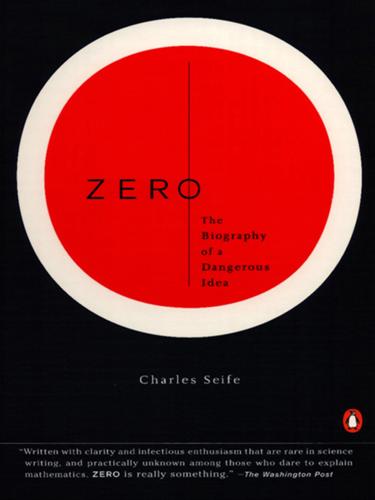
Zero: The Biography of a Dangerous Idea
by
Charles Seife
Published 31 Aug 2000
However, they were terribly complex. Planets course around the sky throughout the year, but every so often they stop, move backward, and then shoot ahead once more. To account for the planets’ bizarre behavior, Ptolemy added epicycles to his planetary clockwork: little circles within circles could explain the backward, or retrograde, motion of the planets (Figure 19). The power of Copernicus’s idea was in its simplicity. Instead of placing Earth at the center of the universe filled with epicycle-filled clockworks, Copernicus imagined that the sun was at the center instead, and the planets moved in simple circles. Planets would seem to zoom backward as Earth overtook them; no epicycles were needed.
…
This was the beginning of the Reformation; intellectuals everywhere began to reject the authority of the pope. By the 1530s, in a quest to ensure an orderly succession to the throne, Henry VIII had spurned the authority of the pope, declaring himself the head of the English clergy. Figure 19: Epicycles, retrograde motion, and heliocentrism The Catholic Church had to strike back. Though it had been experimenting with other philosophies for several centuries, when threatened with schism it turned orthodox once again. It fell back upon its orthodox teachings—the Aristotelian-based philosophies of scholars like Saint Augustine and Boethius, as well as Aristotle’s proof of God.
…
ellipses elliptic curve energy, in vacuum Engels, Friedrich Epic of Gilgamesh epicycles equations beauty of differential linear quadratic escape velocity Euler, Leonhard event horizon evil exclusion principle Feynman, Richard Fibonacci five-based (quinary) system fluxions fractions free energy machines French Revolution galaxies see also universe Galileo Galilei gases plasma Gauss, Carl Friedrich gematria geometry Cartesian coordinates in Egyptian invention of projective God Aristotelian doctrine as proof of complex numbers and Pascal’s wager and universe created by golden ratio Grandi, Guido Graves, Robert gravitational lenses gravity light bent by Greeks number-philosophy of numerals of guitar strings Guy, Richard Halley, Edmund Hamlet (Shakespeare) Hardy, Thomas harmonic series Hawking, Stephen heat death Hebrew creation myths Hebrew numerals Heisenberg, Werner Hertz, Heinrich Hilbert, David Hinduism Hippasus “Hollow Men, The” (Eliot) Hooke, Robert Hubble, Edwin imaginary numbers India infinitesimals infinite vacuum infinite zeros infinity Euler and in Indian mathematics limit and and measuring area and volume Pascal’s wager and Renaissance and of universe vanishing point and integers integration interference irrationality irrational numbers irregular shapes, measuring of Islam Jansenists Jesuits Jesus Jews John I, Pope Julian Date kabbalism Kelvin, William Thomson, Lord Kepler, Johannes Koran Kronecker, Leopold Lamoreaux, Steven Laplace, Pierre-Simon Leibniz, Gottfried Wilhelm length Leonardo da Vinci L’Hôpital, Guillaume-François-Antoine de Liber Abaci (Fibonacci) light bending of interference in speed of ultraviolet limit line, slope of linear equations lottery Lucretius Luther, Martin Maclaurin, Colin Maimonides, Moses Manichaean heresy mass inflation of mathematics beauty in birth of Indian Mayans calendar of numerals of Michelson, Albert millennium, controversy over start of Millis, Marc Mohammed Monge, Gaspard monochord Morley, Edward motion of planets multiplication by zero musical scale Muslims myriads mysticism, Jewish NASA nature Nature nautilus negative numbers square roots of neutron star Newton, Isaac calculus of Nicholas of Cusa Number: The Language of Science (Danzig) numbers and counting Indian starting with zero numerals Arabic Babylonian Mayan omicron “On Poetry: A Rhapsody” (Swift) orders ordinal numbers Oresme, Nicholas origin of zero painting and drawing, dimension in parabola Parmenides Parthenon particle accelerators particles string theory and virtual Pascal, Blaise experiments of wager of Pascal, Étienne Pauli, Wolfgang Pensées (Pascal) pentagram perpetual-motion machines perspective, in painting and drawing photoelectric effect photons physics Planck, Max plane, complex planets: motion of Pythagorean model of see also universe plasma point vanishing Polder, Dik pole polynomials Poncelet, Jean-Victor probability projective geometry Ptolemy Puthoff, Harold Pythagoras, Pythagoreans planetary model of quadratic polynomials and equations quanta quantum leap quantum mechanics string theory and quantum sail quarks quartic polynomials quinary system quintic polynomials rate times time equals distance rationality, rational numbers ratios golden Rayleigh-Jeans law real numbers Rees, Martin Reformation relativity string theory and Renaissance renormalization retrograde motion Riemann, Georg Friedrich Bernhard Rig Veda Romans numerals of Scaliger, Joseph Schrödinger equation scientific revolution sets Seven Years’ War sexagesimal system Shakespeare, William Shiva Sierpinski, Waclaw singularities essential naked slope of tangent space-time space travel speed of light sphere square diagonal of square numbers square roots of negative numbers stain, measuring of standard candles stars Cepheid collapsing of light bent around movement of statistical mechanics steady-state theory Stefan-Boltzmann equation Stone Age string theory Suiseth, Richard supernovas Swift, Jonathan Sylvester II, Pope tachyons tally sticks tangent Taylor, Brook Tempier, Étienne Thales theories, beauty in Theory of Everything thermodynamics Thomas Aquinas, Saint time: relativity of space-time travel in timekeeping see also calendars time machine, making Times (London) Torricelli, Evangelista transfinite numbers triangle, estimating size of triangular numbers trigonometry two-based (binary) system ultraviolet catastrophe ultraviolet light uncertainty principle universe: Aristotelian model of, see Aristotle, Aristotelian doctrine big bang theory of origin of Earth’s position in as eternal expansion of fate of God as creator of Hindu model of as infinite lumpiness of size of steady-state theory of vacuum and vacuum energy in infinite and lumpiness of universe see also void vanishing point velocity escape vigesimal (base-20) system void atomism and Descartes and in Hinduism Leibniz and see also vacuum Washington Post wave functions wavelength waves interference in Wheeler, John Whitehead, Alfred North wormholes wormhole time machine, making Yorktown, USS Zeno Achilles paradox of zero: birth of as dangerous division by infinite, see also infinity life without multiplication by origins of as placeholder roots of word for starting counting with transformation of, from placeholder to number Western rejection of zero-dimensional objects zero-point energy * The Greek word for ratio was (logos), which is also the term for word.
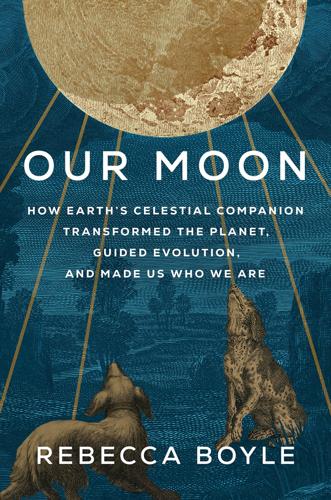
Our Moon: How Earth's Celestial Companion Transformed the Planet, Guided Evolution, and Made Us Who We Are
by
Rebecca Boyle
Published 16 Jan 2024
The equant is essentially a tool that enables the planets to move at different speeds along the deferent, because the planets do appear to move across the sky at different speeds. These are combined with a second orbital scheme, called an epicycle, to explain retrograde motion. A planet’s epicycle sits on the outside of its deferent. Imagine coffee-drip rings overlapping on a café table, forming concentric circles. Ptolemy posed that the epicycle spins counter to the deferent, so sometimes an object going around Earth would appear to slow down or move backward, thus explaining retrograde motion. So now you have Earth inside a large circle that represents the movements of the other celestial bodies. They are also running laps along their own mini circles, which sit on the edge of the larger circle.

Firepower: How Weapons Shaped Warfare
by
Paul Lockhart
Published 15 Mar 2021
Maxim took out a flurry of patents before he publicly debuted his prototype gun, and that act alone proves the depth of his understanding of firearms technology. The American expat perceived, with enviable clarity, that the energy unleashed by the detonation of ammunition in a firearm could be collected and redirected in more ways than one. Maxim discerned three ways in particular. First there was the “recoil-operated” action, which used the retrograde motion of the barrel—recoil—to power the gun’s loading and firing mechanism. Closely related to recoil operation was what is known today as a “blowback” action, harnessing the energy created by the propellant at detonation, the same energy that would propel a spent case out of an open breech. Finally, there was the energy provided by excess gas moving forward behind the bullet, venting out the muzzle when the bullet left the barrel.
…
These three diagrams show the workings of the brilliantly simple Maxim action. “3. Moment”: The lock (right) is closed against the breech (left). The lock is gripping a fresh round from the feed-belt (top, black cartridge) and the chambered cartridge that is about to be fired. “4. Moment”: The gun has now fired; the retrograde motion of the barrel from recoil throws the lock back, away from the breech. The lock-face drops, so that the fresh round just drawn from the belt is now opposite the chamber (“Lauf,” or barrel) and the spent casing is opposite the ejection port (“Ausstoßloch”). “5. Moment”: The lock, powered by the fusee spring, slams forward again, chambering and firing the fresh cartridge as it hurls the empty out of the ejection port.
…
It propelled guns backward so that they could be safely loaded from the muzzle within the confines of a fortress casemate or a ship’s gun deck. But for a crew serving a mobile fieldpiece on land, recoil was most assuredly a foe. The wheels that made the gun carriage mobile also sped its violent retrograde motion, and a recoiling cannon could not be stopped safely by hand. On level, dry ground, an ordinary field gun would recoil several feet when fired. That didn’t prolong loading time, but it required the gunner and the crew to haul the piece back “into battery” and “lay it on”—aim it—all over again.

2312
by
Kim Stanley Robinson
Published 22 May 2012
Around the same time, a small planet about three thousand kilometers in diameter struck Mars and created the Borealis Basin, which is basically Mars’s northern hemisphere, still six kilometers lower than the southern hemisphere. Venus was struck by a Mars-sized planet, creating a moon like Earth’s, called Neith; ten million years later, another impactor gave Venus its slow retrograde motion. This change in rotation slowed Neith and caused it to plunge back into Venus and merge with it. Mercury was struck by a protoplanet half its size, at such a speed and angle that Mercury’s mantle was stripped off and cast throughout Mercury’s orbit. Ordinarily Mercury would have swept these pieces back up, but in the four million years this process would have taken, most of the material was pushed outward by solar radiation and thus never made it back to Mercury.
…
At this point (140 years freezing and preparation, 50 years scraping and poaching, so be patient!) you might think that the planet is ready for biological occupation. But remember, combining the Venusian year of 224 days with its daily rotation period of 243 days, you get a screwball curve (retrograde motion, sun rising in the west) in which the solar day for any particular point on the planet is 116.75 days. Tests have long since determined that that’s too long for most Terran life-forms to survive, tweaked or not. So at this point, two main options have been identified. First is to program the sunshield so that it lets through sunlight to the surface and then blocks it off again, flexing like a circular venetian blind to make a more Terran rhythm of night and day.
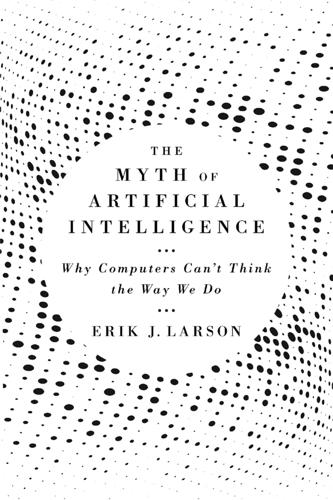
The Myth of Artificial Intelligence: Why Computers Can't Think the Way We Do
by
Erik J. Larson
Published 5 Apr 2021
He redrew everything with the sun at the center, and worked out a usable heliocentric model. Importantly, the initial Copernican model was actually less predictive despite its being correct. It was initially only a framework that, if completed, could offer elegant explanations to replace the increasingly convoluted ones, such as planetary retrograde motion, plaguing the Ptolemaic model. Only by first ignoring all the data or reconceptualizing it could Copernicus reject the geocentric model and infer a radical new structure to the solar system. (And note that this raises a question: How would “big data” have helped? The data was all fit to the wrong model.)

Galileo's Daughter: A Historical Memoir of Science, Faith and Love
by
Dava Sobel
Published 25 May 2009
The denouement at that day’s end, when it came time for the three characters to close discussion and draw conclusions, demanded delicate diplomacy, for the text of the third and fourth days advanced compelling physical arguments in support of Copernicus, while the overall tenor of the book needed to preserve the spirit of hypothesis, as Galileo had promised Urban it would. “In the conversations of these four days we have, then, strong evidences in favor of the Copernican system,” sums up the hospitable Sagredo, “among which three have been shown to be very convincing—those taken from the stoppings and retrograde motions of the planets, and their approaches toward and recessions from the Earth; second, from the revolution of the Sun upon itself, and from what is to be observed in the sunspots; and third, from the ebbing and flowing of the ocean tides.” But Salviati-cum-Galileo, although he has led the discussion in this direction, refuses to endorse Copernicus in the end.

Range: Why Generalists Triumph in a Specialized World
by
David Epstein
Published 1 Mar 2019
He was given the assignment nobody wanted: Mars and its perplexing orbit. The orbit had to be a circle, Kepler was told, so he had to figure out why Brahe’s observations didn’t match that. Every once in a while, Mars appears to reverse course in the sky, do a little loop, and then carry on in the original direction, a feat known as retrograde motion. Astronomers proposed elaborate contortions to explain how Mars could accomplish this while riding the interlocking spheres of the sky. As usual, Kepler could not accept contortions. He asked peers for help, but his pleas fell on deaf ears. His predecessors had always managed to explain away the Mars deviations without scrapping the overall scheme.

Pathfinders: The Golden Age of Arabic Science
by
Jim Al-Khalili
Published 28 Sep 2010
One of the most serious anomalies was to do with the motion of the planets, particularly Mars. It was known that planets moved across the sky from east to west at a faster rate than the fixed stars. But this rate was not constant. In fact, relative to the stars, they would slow down, speed up, and sometimes even double back on themselves. This ‘retrograde’ motion could not be accommodated in Aristotle’s model and a fix was devised by Hipparchus and later perfected by Ptolemy. By the time Ptolemy published his Mathematical Treatise, around 150 CE, later to be known of course by its Arabic title of Almagest, Aristotle’s model had been extended, tweaked and modified in order to match the observed motion of the heavens.
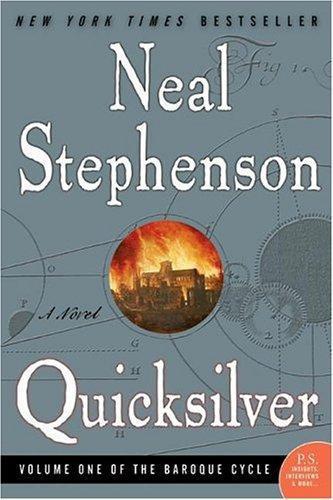
Quicksilver
by
Neal Stephenson
Published 9 Sep 2004
“Astronomers used to explain the seeming retrograde movements of the planets by imagining a phantastic heavenly axle-tree fitted out with crystalline spheres. Now we know that in fact the planets move in smooth ellipses and that retrograde motion is an illusion created by the fact that we are making our observations from a moving platform.” “Viz. the Earth.” “If we could see the planets from some fixed frame of reference, the retrograde motion would disappear. And you, Roger, observing Newton’s wandering trajectory—one year devising new receipts for the Philosophic Mercury, the next hard at work on Conic Sections—are trying to figure out whether there might be some Reference Frame within which all of Isaac’s moves make some kind of damned sense.”

Evidence-Based Technical Analysis: Applying the Scientific Method and Statistical Inference to Trading Signals
by
David Aronson
Published 1 Nov 2006
As discordant observations occurred, new assumptions were added to the theory, in the form of smaller orbits revolving about a planet’s principal orbit. These ad hoc fixes, called epicycles, permitted the theory to account for the troublesome observations. For example, epicycles were able to explain why planets were sometimes seen to move backwards (retrograde motion) rather than follow a continuous path across the sky. Over time, a succession of epicycle fixes transformed the fundamentally incorrect theory of an Earth-centered universe into an unwieldy monstrosity of complexity with epicycles upon smaller epicycles upon even smaller epicycles. A landmark in scientific history took place when the telescope of Galileo Galilei (1564–1642) showed that four moons circled the planet Jupiter.

The Man Who Saved the Union: Ulysses Grant in War and Peace
by
H. W. Brands
Published 1 Oct 2012
“Further movement to Grant’s rear was not to be considered, for his unbroken lines on each side of me would promptly close up the gap which my men had cut through his center, thus rendering the capture of my whole command inevitable.” Retreat was almost as fatal. “Those same unbroken and now unopposed ranks on each side of me, as soon as such retrograde motion began, would instantly rush from both directions upon my retreating column and crush it.” So Gordon improvised. He ordered half his line to file right and the other to file left, thereby arraying each half perpendicular to the flank of the corresponding segment of the Union line. He then ordered a double charge, with his twin lines surging away from each other but wreaking havoc on the Federal flanks.